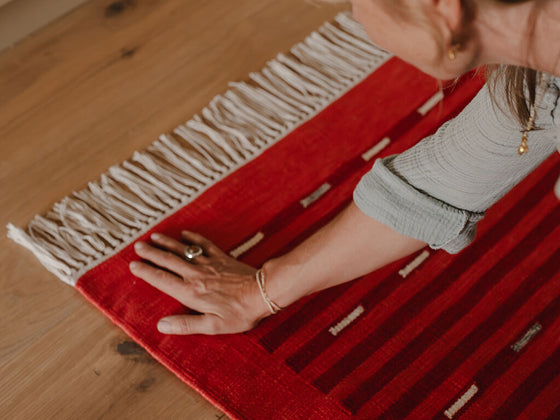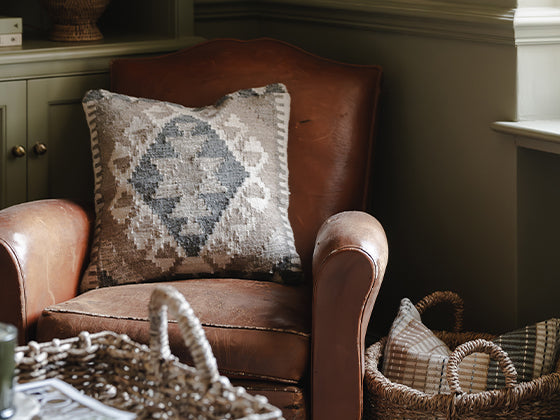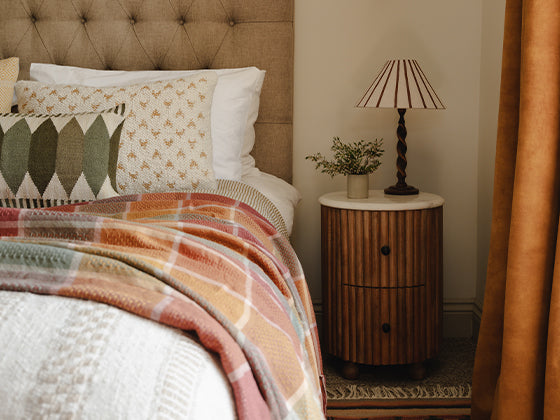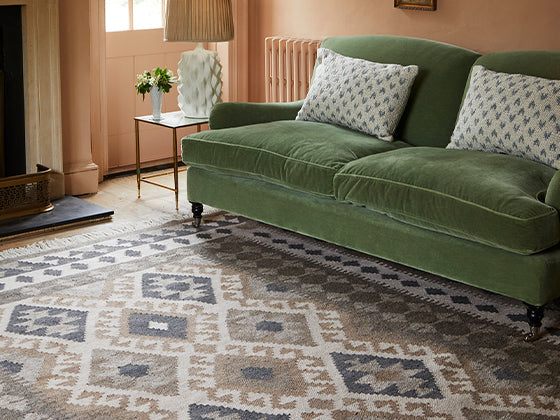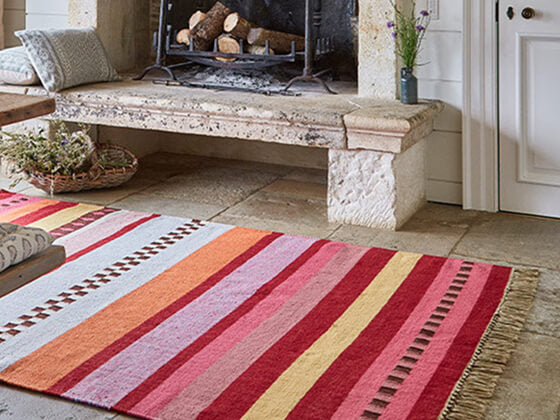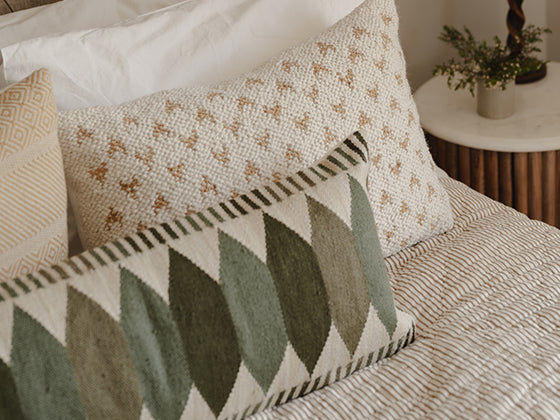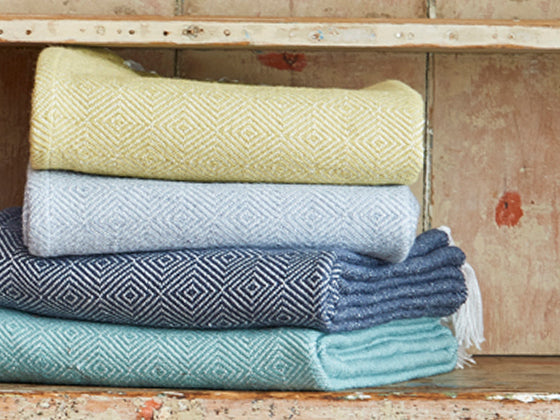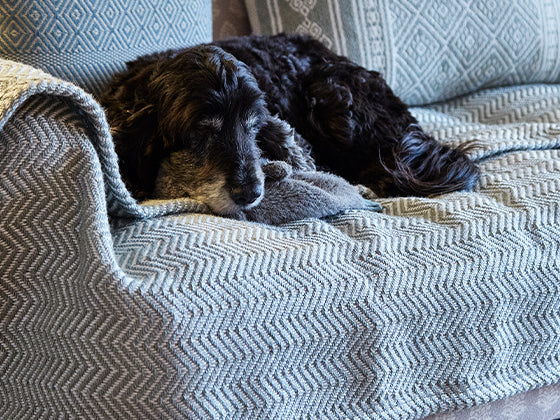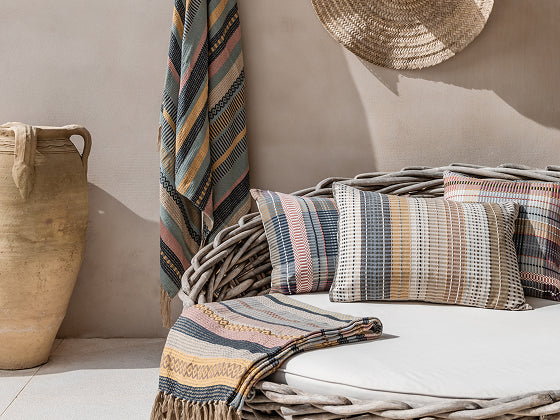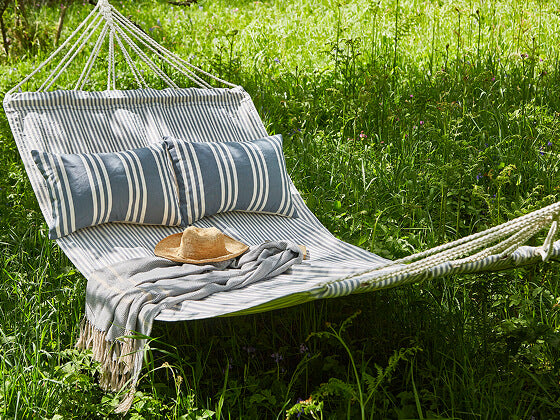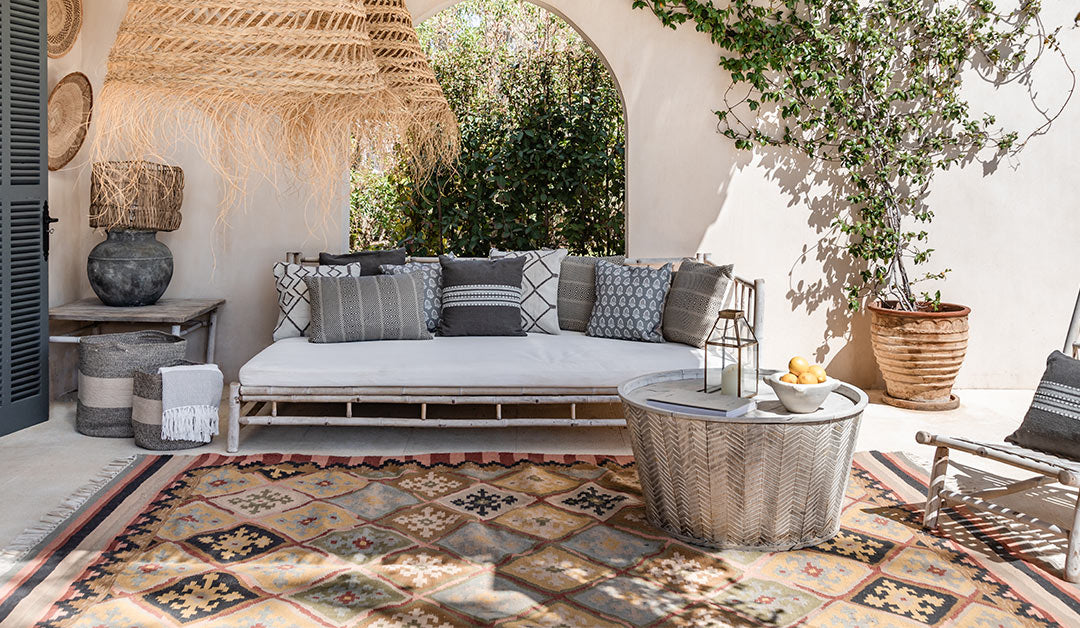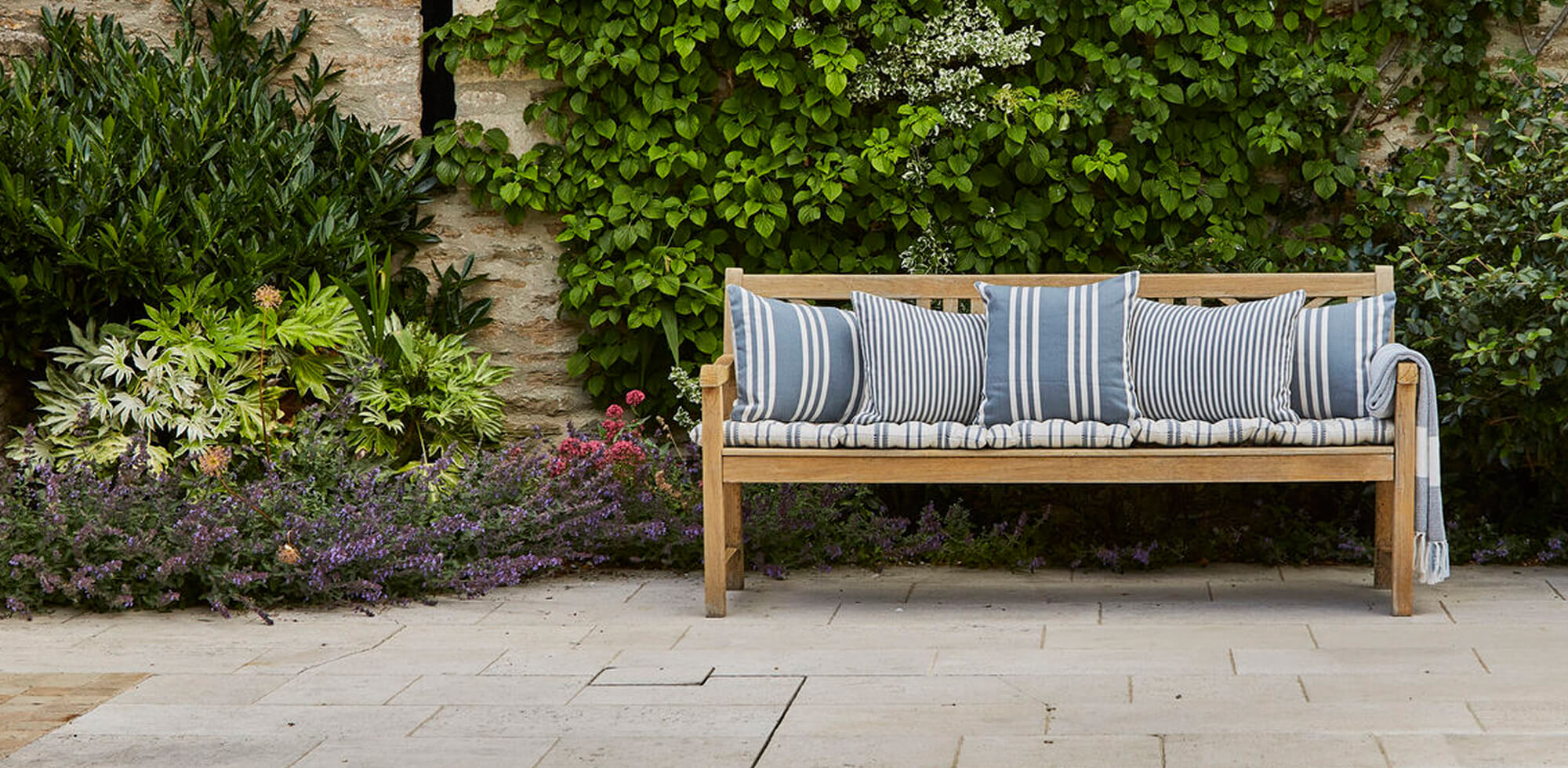Historically woven throughout the Ottoman Empire and along the silk road, kilim rugs were traditionally crafted by women to use in nomadic tents as integral parts of the marital home. Made using durable cotton or wool warp and dyed using natural pigments, kilim making requires huge skill but very little equipment: Only a loom, a comb, and the yarns. Nomadic tribes would have used floor mounted, horizontal looms that would have been staked into the ground for stability but were easily moved when travelling. Those in more permanent houses would floor mount their looms for ease of use. Patterns and motifs are worked on in sections using a ‘slit weave’ technique where weavers create slim gaps between different motifs and colour blocks.
Often woven by hand, weaving skills were passed down from mother to daughter and the beauty of kilims comes from the incredible use of design, colour and craft from the artisans that weave them. Often these designs have great significance to the weaver, with each kilim using a series of symbols that signify the weaver’s hopes, dreams, and fears. Each Kilim is a story and owning one means there is a hidden language beneath your feet that could hide a love story or even a prayer of protection for your home against wolves or scorpions. Understanding these symbols not only unlocks these hidden meanings, it gives an insight into the creativity and love that has always gone into this traditional craft.

